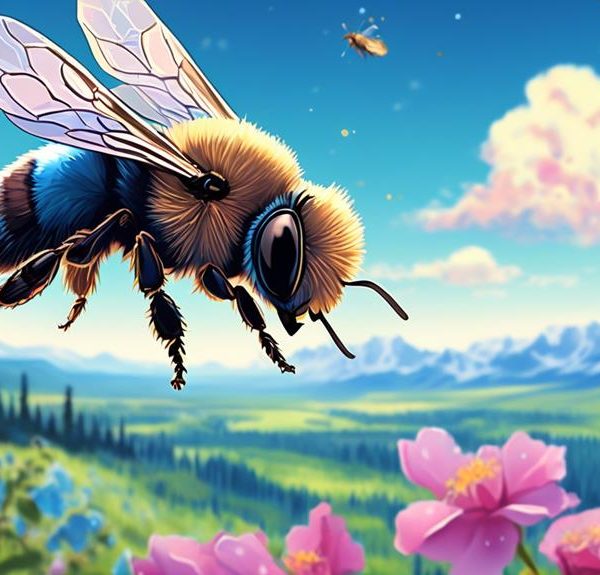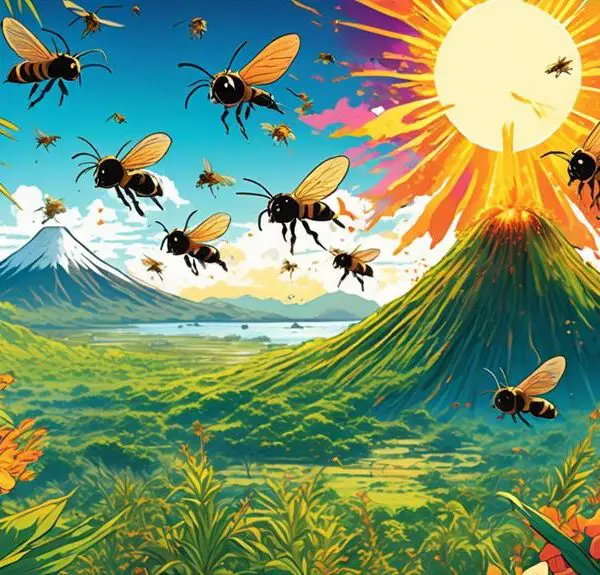Navigate the intriguing world of Mason Bees and their elusive presence within the diverse ecosystems of Australia.
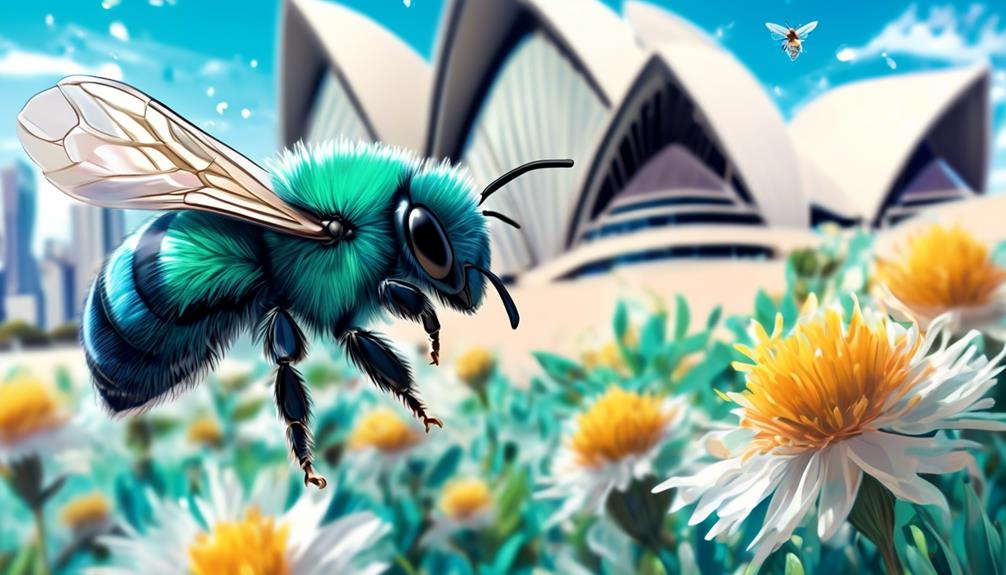
Are There Mason Bees in Australia?
Have you ever wondered about the species diversity of bees across the globe, specifically the presence of Mason Bees in Australia? You're not alone.
As an enthusiast of the buzzing world, you'd find it intriguing to know that the distribution of bee species, including the Mason bees, is not homogenous worldwide. Australia, with its unique flora and fauna, makes for an interesting case study.
But whether or not these industrious Mason bees have made the Australian continent their home, is a question we'll leave for further exploration.
Key Takeaways
- Mason Bees are primarily native to the Northern Hemisphere but their presence in Australia is still debated.
- If present in Australia, Mason Bees could have a significant impact on flora and fauna, enhancing pollination of native plants and potentially contributing to the spread of invasive species.
- Mason Bees, if present, could significantly boost agricultural productivity in Australia, as they are efficient pollinators and can do the work of numerous honeybees.
- Conservation efforts for Mason Bees in Australia should focus on habitat conservation, providing nesting sites, planting native flora, reducing pesticide use, advocating for organic farming, and raising awareness through public education and citizen science projects.
Understanding Mason Bees
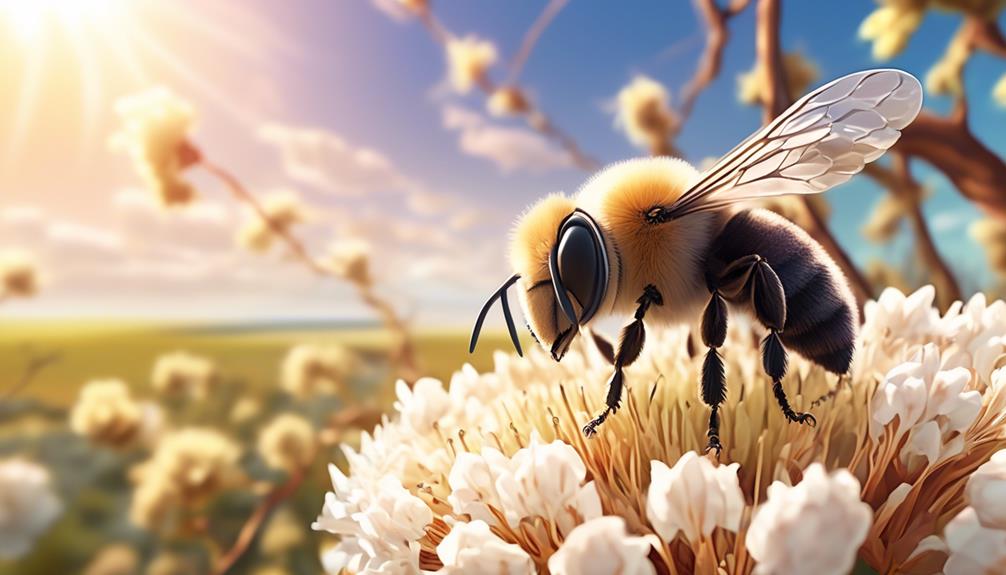
To fully appreciate the role of Mason Bees in Australia, it's crucial to delve into an understanding of their unique biology, behavior, and ecological significance. You may be surprised to learn how these tiny creatures significantly contribute to our ecosystem.
Mason Bees are solitary bees, meaning each female is a queen who builds her nest, lays eggs, and forages for food. Their name comes from their habit of using mud or clay ('masonry') to build their nests. They're non-aggressive and rarely sting, making them a safe neighbor even in urban settings.
These bees are efficient pollinators, more so than their honeybee counterparts. A single Mason Bee can do the work of 100 honeybees, and they're not picky about the weather. Unlike honeybees, which prefer sunny conditions, Mason Bees will continue their pollination work even in the cold and rain.
In Australia, they're known for their role in pollinating orchard crops, contributing to higher yields and better fruit quality. Understanding Mason Bees' biology and behavior is vital for conserving their population and maximizing their ecological benefits.
Distribution of Mason Bees Globally
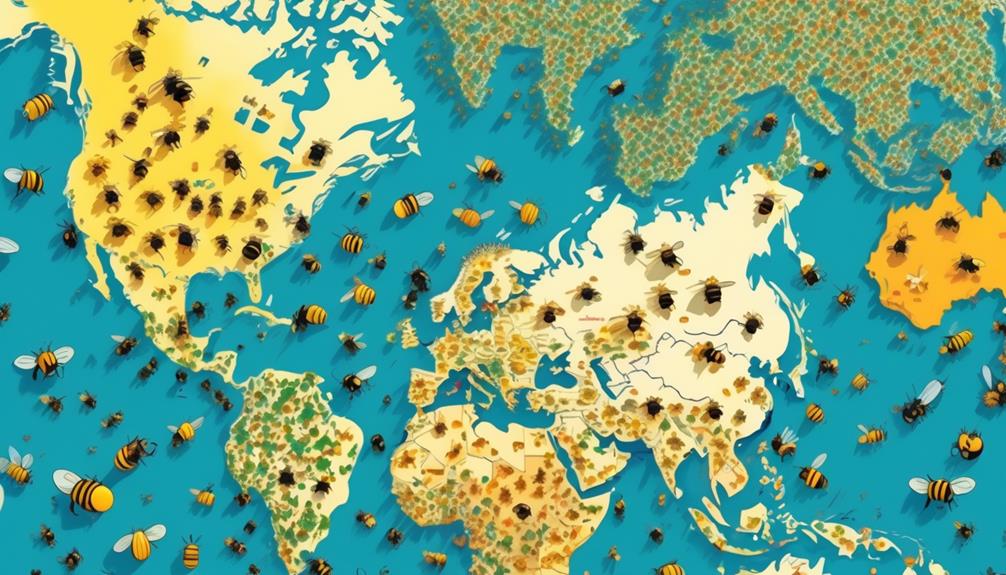
Spanning the globe, you'll find Mason Bees in various regions, their distribution influenced by factors such as climate, availability of food sources, and suitable nesting habitats. These solitary bees are primarily native to the Northern Hemisphere, with a significant presence in North America, Europe, and Asia.
Each species has adapted to their respective environments, showing a remarkable degree of resilience and adaptability. For instance, Osmia lignaria, commonly known as the blue orchard bee, thrives in North America's varied climates, while Osmia bicolor, prefers Europe's temperate zones.
However, don't assume that these bees are confined to cooler climates. You'll find some species, like Osmia avosetta, in the warmer regions of the Middle East and Asia.
In contrast to their global distribution, Mason Bees' presence in Australia is still a topic of debate. The continent's unique climate and biodiversity may pose challenges to their survival. Yet, research is ongoing to confirm their existence in this region.
Mason Bees in the Australian Ecosystem
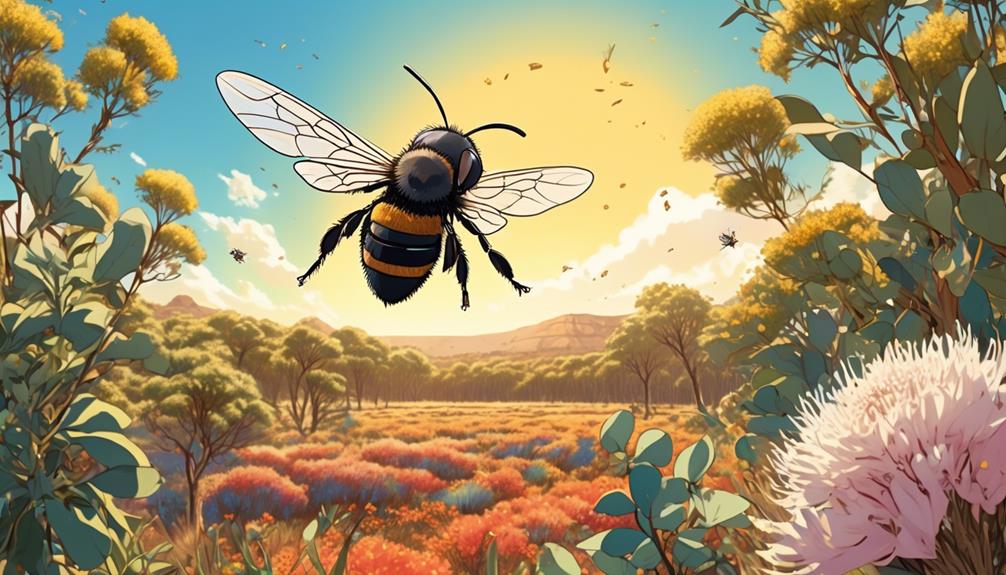
While the existence of Mason Bees in Australia is still under scrutiny, it's crucial to explore their potential role and impact within the continent's unique ecosystems. Should they be present, these bees could have a profound influence on both the flora and fauna due to their distinct pollination behaviour.
Mason Bees, being solitary, don't build communal hives like honeybees. Instead, they construct individual nests, often in hollow reeds or cracks in wood, thus earning their name 'Mason'. They're highly efficient pollinators, with a single Mason Bee capable of doing the work of numerous honeybees.
In the Australian context, this could mean enhanced pollination of native plants, potentially aiding in the propagation and survival of endemic species. Conversely, if these bees favour introduced species, they could inadvertently contribute to the spread of invasive plants.
Furthermore, their potential interactions with native bee species, such as the stingless Tetragonula, could range from competition to beneficial co-existence. There's also the question of their resilience to Australia's distinctive climate and predators.
Impact on Australian Agriculture
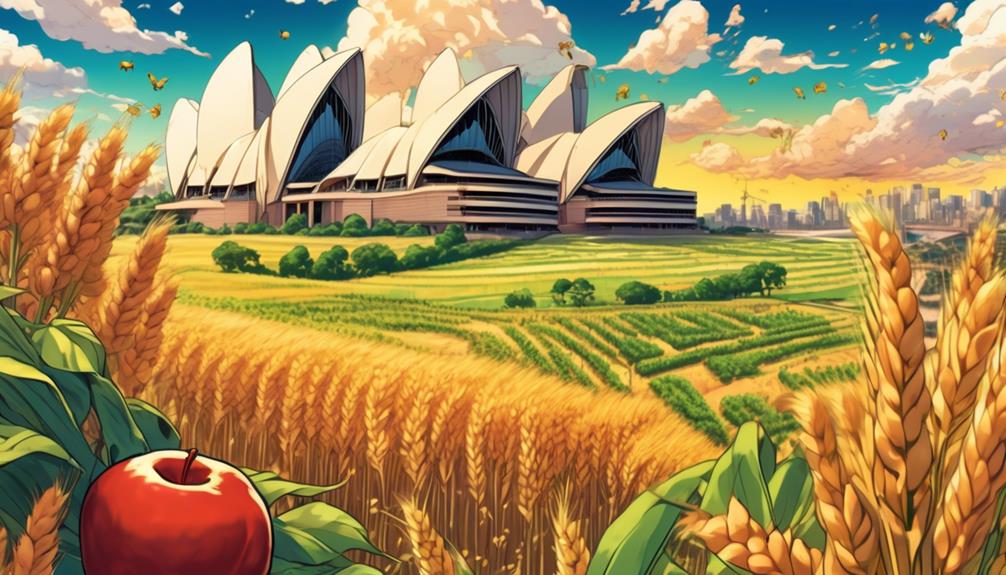
If Mason Bees exist in Australia, their unique pollination skills could significantly boost agricultural productivity, particularly in crops that rely heavily on bee pollination. Mason Bees are solitary bees, known for their efficiency and industriousness. A single Mason Bee can pollinate what would take 100 honeybees to do, and this proficiency could be a game-changer for Australian agriculture.
The potential impact of Mason Bees on crops such as almonds, apples, and cherries, which depend extensively on bee pollination, could be profound. You'd see an increase in crop yields, with the added bonus of improved quality due to more effective pollination.
However, it's not just about increased productivity. Mason Bees could also enhance the resilience of Australian agriculture to environmental changes. They're robust, able to pollinate in cooler and wetter conditions than many other bee species, and less susceptible to diseases and pests. This resilience could provide a buffer against the risks posed by climate change and other environmental challenges.
Conservation Efforts for Mason Bees
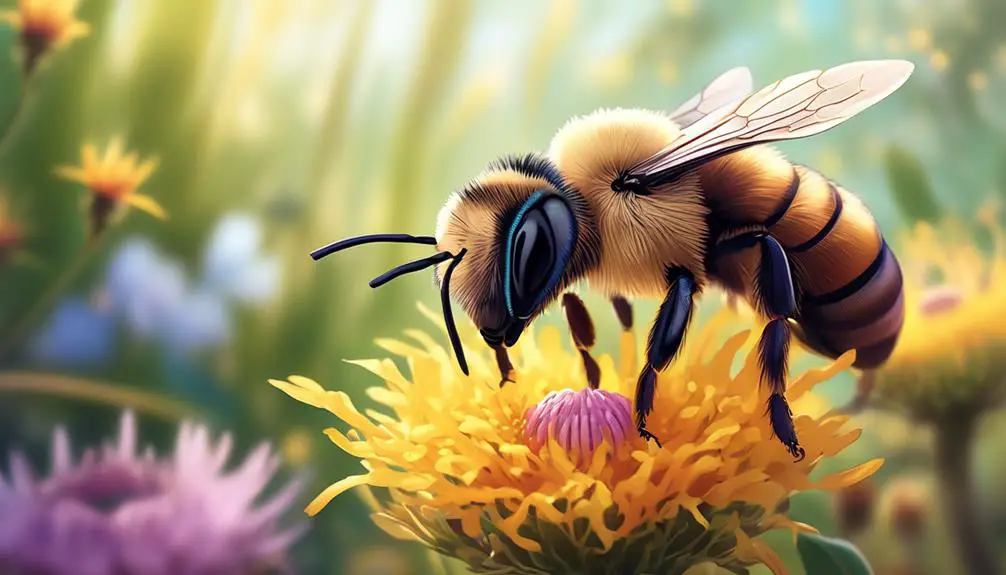
Given the potential benefits Mason Bees could bring to Australian agriculture, it's crucial that we explore conservation efforts aimed at protecting and promoting this industrious pollinator. At present, there's a growing awareness of the necessity for targeted initiatives to safeguard these bees.
Firstly, habitat conservation is key. You're encouraged to create bee-friendly environments by offering nesting sites such as hollow stems or bee houses. Additionally, the planting of native flora that blooms throughout the year ensures a constant food supply.
Secondly, pesticide reduction strategies are essential. Many Mason Bees are susceptible to chemical pesticides commonly used in agriculture. Advocating for organic farming methods and integrated pest management strategies can significantly reduce this threat.
Lastly, public education is a vital tool in conservation. By raising awareness about the importance of Mason Bees and the threats they face, we can foster a culture of conservation. Citizen science projects encouraging individuals to monitor local bee populations can also contribute valuable data for conservation strategies.
Conclusion
Yes, you'll find Mason bees in Australia. They play a vital role in the ecosystem, contributing to the pollination of various plants. Their impact on Australian agriculture is significant.
However, they're under increasing threat due to habitat loss and climate change. Therefore, conservation efforts are imperative to preserve these beneficial insects and maintain the balance of our environment.
So, let's value these tiny creatures for the massive work they do.

